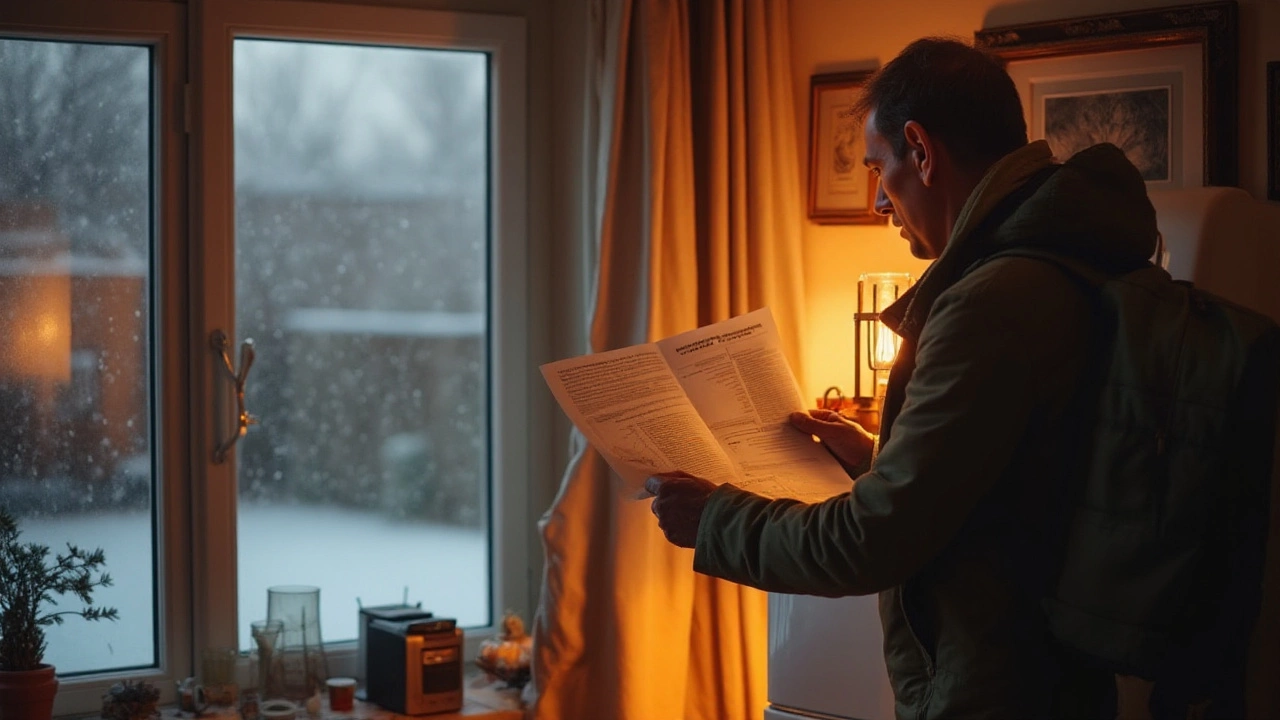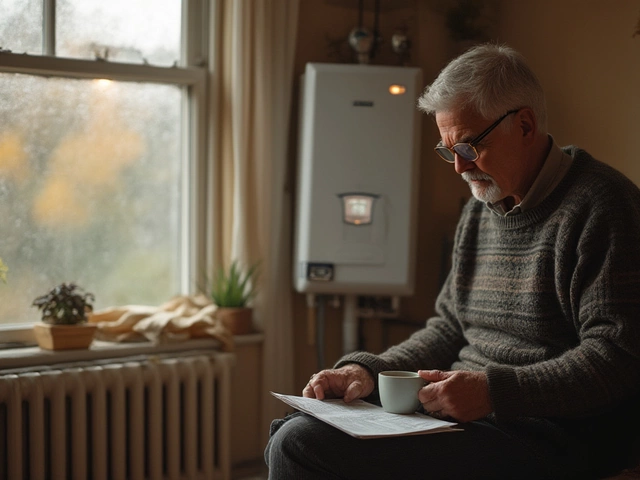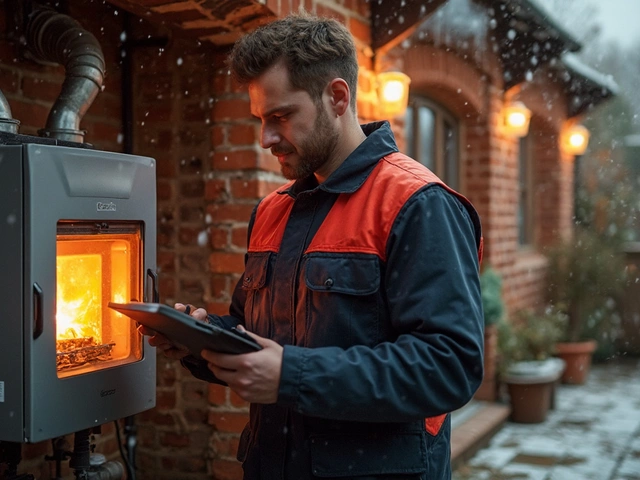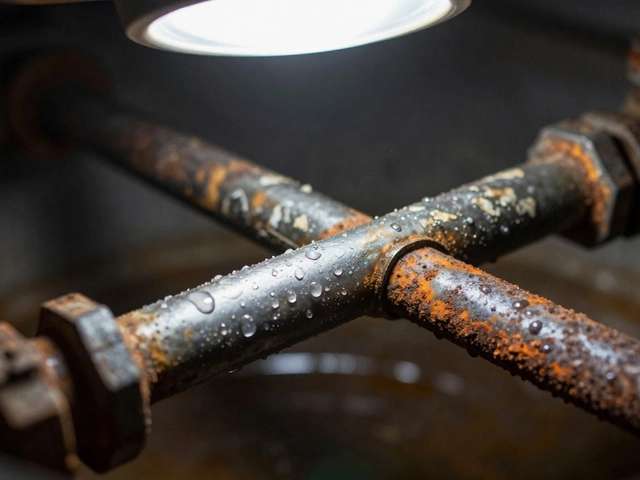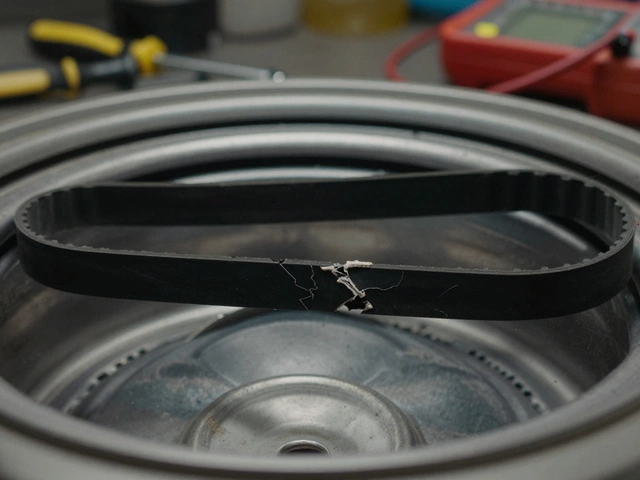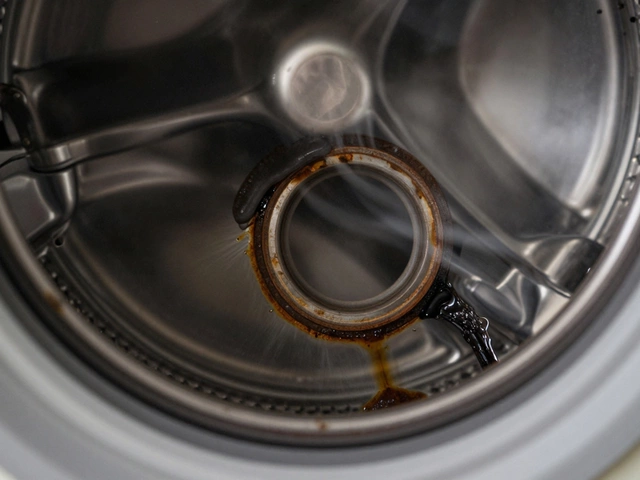The winter chill is on its way, and the hum of a boiler is music to the ears for many homeowners. But when that boiler is two decades old, the tune can sound more like a question mark than a melody. When faced with the decision of repairing or replacing an aging heating system, the stakes couldn't be higher. Each choice carries its own set of consequences for your finances, peace of mind, and the environment.
Boilers are essential in keeping our homes warm and comfortable, yet an aging unit may not deliver as efficiently as it once did. Factors like repair costs, advancements in technology, and potential energy savings are all important pieces of the puzzle. Before making a decision, it's crucial to weigh the options carefully. By delving into the specifics of boiler lifecycles, repair costs, and efficiency gains, you can make an informed decision that suits your individual needs.
- The Lifespan of a Typical Boiler
- Signs Your Boiler Needs Attention
- Cost Considerations for Repair vs. Replacement
- Efficiency Benefits of Newer Models
- The Environmental Impact of Older Boilers
- Practical Tips for Decision Making
The Lifespan of a Typical Boiler
Understanding the lifespan of a typical boiler offers a peek into its silent yet crucial role in keeping our homes warm and comfortable. Boilers, unlike many other household gadgets, don’t succumb to obsolescence overnight. They live out prolonged life spans, often stretching between 15 to 20 years with proper care and maintenance. Boiler repair and regular maintenance are key to reaching those two decades. This enduring lifespan is partly due to the robust construction of these heating marvels - built to withstand years of pressure cycles and temperature changes.
During these years, however, even the toughest boilers begin to show signs of aging. These might include reduced efficiency, a hike in heating costs, or increased frequency of repairs. It’s like an old workhorse – giving its best into old age but needing more attention and care. According to an analysis by the National Association of Home Builders, boilers can be expected to operate efficiently for two to three decades under right conditions. Still, regular inspections are crucial to identify potential problems before they snowball into serious issues.
It isn’t uncommon for many to question why some boilers don’t last even the estimated 15 years. The answer generally lies in the quality of installation, extent of usage, and maintenance. Just like a car needs servicing, boilers need annual check-ups. These inspections focus on cleaning parts, checking pressures, and testing safety systems to ensure everything runs smoothly. In regions with harsh winters, this maintenance becomes even more critical, pushing your boiler to the limits each season.
In terms of cost-effectiveness, an old heating system may still serve well if consistently maintained. As long as it functions within safe operational parameters and meets your home’s heating demands, there's no immediate rush to replace it. But as energy efficiency standards grow stricter and technology advances, newer models promise greater benefits in the long run. High-efficiency models not only contribute to lower utility bills but also reduce your environmental footprint. Perhaps the wisdom of replacement evolves from not just necessity but also from the aspiration to improve efficiency and sustainability.
Boilers' longevity doesn’t only rest on their mechanical abilities but also their manufacturers' ingenuity. Some brands offer components that can be replaced or upgraded, extending the boiler's lifespan considerably. The durability and quality of materials used in manufacturing significantly impact longevity. Investing in a reliable brand and proper installation might be a worthwhile endeavor for long-term savings and peace of mind. As quoted by the executive director of the Energy Conservation Institute, "A high-quality boiler is akin to having a good coat during a blizzard - indispensable and capable of lasting many seasons if properly cared for."
Signs Your Boiler Needs Attention
The muffled protest of an aging boiler can be subtle, often manifesting as gentle clicks or distant thuds in the dead of night. Sometimes these noises fade into the background of everyday life, but over time, they can signal an urgent plea for attention. One of the most telling signs that a boiler is in need of maintenance is its soundscape. Startled by unexpected bangs or whistling through the pipes, homeowners are often reminded that mechanical systems, no matter how robust, are not immune to wear. These noises are not just auditory quirks but can be the prelude to a larger issue, such as sediment build-up or pressure problems.
But it's not just sound that should alert you. Inconsistent heating is another telltale sign. If rooms feel like stepping into different climates, it might be time to give your heating system a once-over. A 20-year-old boiler straining to distribute heat evenly can mean struggling components or blockages within the system. For those who dread the utility bill's arrival, a noticeable spike month over month could be another hint. An inefficient boiler has to work harder, consuming more energy and inevitably, costing more money. Seasonal high bills might be normal, but unexpected jumps should not be ignored.
Let's talk about leaks. Water pooling around your boiler is never a good sign. Corrosion in the tank or issues with seals can cause leaks, which are not only hazardous but signify that your boiler may be reaching its twilight years. A puddle today can become a flood tomorrow, damaging floors and posing safety risks. It’s crucial to address these at the first sight of moisture. Regular inspections can prevent such surprises, saving you from costly future repairs.
Modern life provides us with many digital conveniences, yet the old thermostat might be the Achilles’ heel of your heating system. If your boiler doesn’t respond to thermostat adjustments promptly, or not at all, it could be a sign of failing controls or internal connections. Updating or recalibrating these components might restore efficiency, but persistent issues might also point to larger systemic failures. In some cases, faulty wiring or outdated connectivity could prevent your boiler from operating at its best.
Finally, be wary of any odors that seem out of place. A boiler should never emit unpleasant smells—this is a red flag for potential carbon monoxide leaks, emphasizing the importance of regular safety checks and having carbon monoxide detectors in place. These are serious risks that must be addressed immediately with professional assistance. As the old saying goes, "Safety begins at home," and in this case, it can quite literally save lives.”
"Maintaining an old boiler is like caring for an elder; attention and timely action are keys to longevity," says the seasoned HVAC expert John Castle.
Pay attention to these signs your boiler sends. They offer vital clues into the condition of your heating system. Address them swiftly and wisely to maintain a warm, safe, and cost-effective home environment, ensuring you don't end up left out in the cold, quite literally.
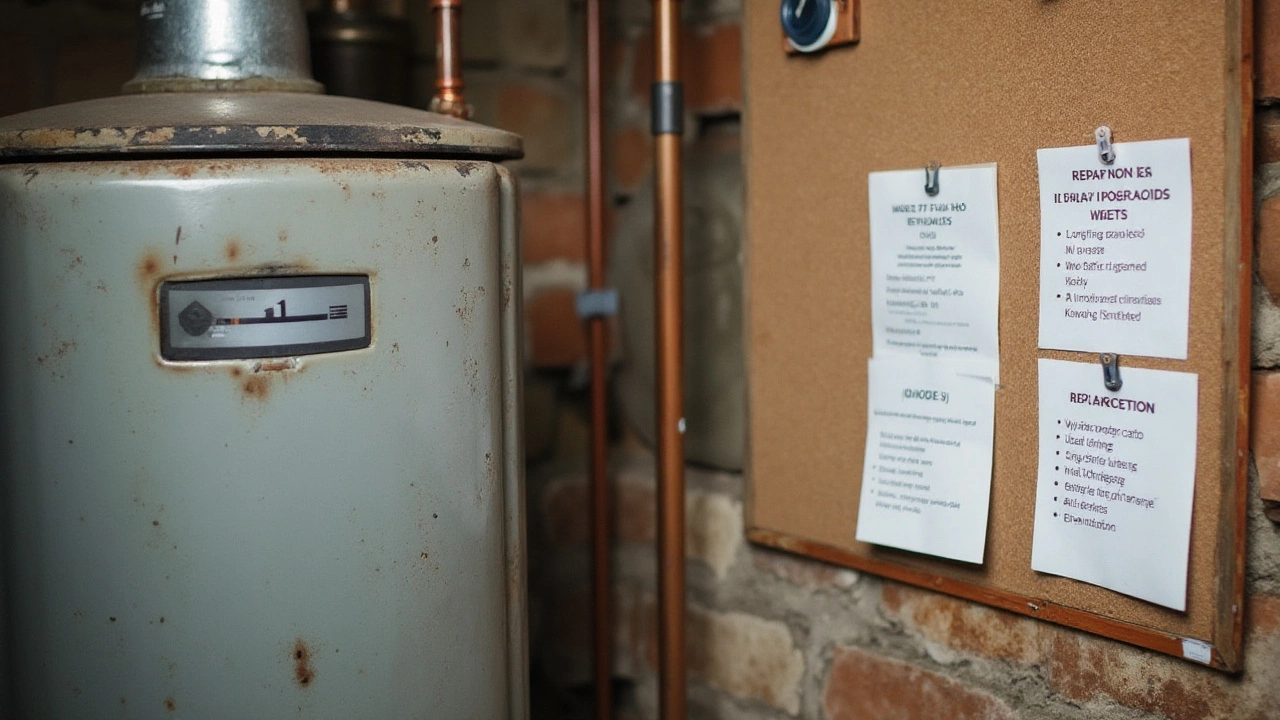
Cost Considerations for Repair vs. Replacement
When determining if it's worth saving a 20-year-old boiler or investing in a new one, understanding the cost implications is critical. Repairing an existing unit can seem like an easier, less expensive option at first glance. A standard repair might set you back anywhere from $150 to $500, depending on the issue and whether parts are readily available. Yet, there's a catch—these smaller repairs can stack up significantly over time, especially with older boilers more prone to frequent breakdowns.
A key factor is when repair costs exceed half the price of replacing the boiler altogether. On the contrary, a complete replacement, including the price of a new unit and installation, generally ranges from $3,500 to $8,000. With new models boasting enhanced energy efficiency, you'll notice savings on monthly energy bills, although initially costly. To put it in perspective, EnergyStar estimates you could save about 30% annually on heating costs with a new ENERGY STAR certified boiler.
David Holmes, a heating systems expert, once noted, "If you're calling for repairs more than once a season, it's likely time for an upgrade."
Consider also the hidden costs—labor, unexpected additional parts, and the time spent without working heat—each carries its weight. When your system reaches the two-decade mark, even manufacturers often don't stock parts, raising repair costs, further tilting the scales towards replacement. The potential savings from switching to a more efficient system can be significant too. These systems employ condensing technology, recovering more heat from exhaust gases and using less fuel.
Ultimately, visualizing the long game brings more clarity. You're not only battling upfront sticker shock—you're engaging with years of accumulated expenses and energy bills. Weigh in the comfort factor as well; new units promise quieter operation and less interruption. So while initial calculations are useful, the true cost culminates over time, and considering these means peace of mind down the road.
Efficiency Benefits of Newer Models
When considering whether to repair or replace a 20-year-old boiler, the efficiency advances in newer models can't be overlooked. Modern boilers are designed with state-of-the-art technology that was unavailable two decades ago. These advancements translate into lower energy consumption and significant cost savings over time. New boiler systems have advanced heat exchangers and smart thermostats, which optimize how heat is distributed in your home. This not only means a warmer home but also a reduction in energy wastage, effectively lowering your utility bills.
Regulatory standards have also evolved, pushing manufacturers to produce boilers with higher efficiency ratings. Today's heating systems often come with AFUE (Annual Fuel Utilization Efficiency) ratings in the high 80s and 90s, a leap from the 60s and 70s seen in older models. A high AFUE rating indicates that the boiler converts a greater portion of the fuel it uses into heat. Consider that replacing an old boiler with a newer, more efficient model could lead to energy savings of 20% or more, a substantial figure when viewed on an annual basis. This not only benefits your bank account but also has environmental benefits, reducing your home's carbon footprint.
One interesting facet of new boiler technology is the integration of smart controls. These let homeowners fine-tune their heating systems remotely, even from smartphones. This level of control means heating systems can be adjusted according to weather predictions, occupancy, and personal comfort levels, ensuring no energy is wasted. Research from the Energy Savings Trust indicates that such smart technology can save households up to 15% on their heating bills annually. It's a realm where cutting-edge tech is directly aligned with everyday utility.
"The key to understanding the long-term savings from a new boiler is its efficiency rating," explains Peter Reynolds, an expert from the HVAC Research Institute. "With rising energy costs, investing in a high-efficiency model will payoff not just financially but in terms of comfort and sustainability."
If we delve into specifics, a modern condensing boiler utilizes a secondary heat exchanger to recover and recycle latent heat from exhaust gases. Older boilers lacked this feature, meaning they often wasted heat that new systems now repurpose. This extra step in the heat exchange process ensures minimal energy loss. Additionally, many newer models are compatible with eco-friendly energy sources, such as solar panels, allowing households to further enhance their sustainability efforts. When one puts it all together, the evidence leans favorably towards upgrading to a newer model if the existing boiler is reaching the end of its expected lifespan.

The Environmental Impact of Older Boilers
As boilers age, their ecological footprint tends to grow—an issue of pressing concern as we increasingly acknowledge our responsibility toward a sustainable future. Among the most significant impacts is the inefficiency that plagues older systems, which often results in elevated energy consumption. This excess usage not only hikes utility bills but also boosts the demand on power plants, most of which rely heavily on fossil fuels. With every additional kilowatt demanded, our carbon emissions inch upward, intensifying global warming—an unsettling premise as countries around the globe pledge to slash CO2 levels.
Old boilers typically operate at lower efficiency levels than their modern counterparts. For instance, a boiler that's pushing the two-decade mark may only convert 60-70% of its fuel into heat. In stark contrast, contemporary models boast efficiencies of over 90%, which means less fuel is needed for the same heat output. Our planet feels the difference keenly. A report by the Environmental and Energy Study Institute highlights that residential and commercial heating is one of the largest contributors to carbon emissions, with outdated heating systems significantly exacerbating the problem.
The Role of Maintenance and Upgrades
Without regular servicing, older boilers are prone to increased emissions. Even well-maintained systems can only partially mitigate the rise in pollutants as components wear down over time. Simple practices, such as adjusting thermostats lower to save energy or insulating homes to reduce heat loss, can alleviate some environmental harm, yet they do not address the root issues within aged technologies. Transitioning to low-NOx models or those compatible with renewable energies can greatly reduce the stripper emissions from burning natural gas or oil. These changes, albeit investments, cater to a more sustainable use of energy, which is vital in curbing emissions traced directly back to our doorstep.
It's worth noting, however, that not all systems are created equal regarding environmental impact. Some older models may already incorporate earlier technology advancements aimed at enhancing efficiency. Yet, despite this marginal headstart, groundbreaking developments in boiler and HVAC technology constantly redefine energy standards. If foregone, your old unit not only places unnecessary strain on utilities but can lead to more immediate local environmental degradation through pollutant exchange between indoor and outdoor air. In short, as energy awareness continues to transform the market, every inefficient day under an old boiler's reign could be seen as a lost opportunity for reduced carbon footprints.
Practical Tips for Decision Making
When deciding whether to repair or replace a 20-year-old boiler, a multitude of factors come into play. It’s essential to strike a balance between short-term needs and long-term benefits. First, assess the current condition of your heating system. Consider how often it needs maintenance and repairs—frequent issues might suggest that a more durable solution like replacement is worth considering. Even with regular upkeep, an older boiler might be inching towards an inevitable breakdown. In such cases, the cost of repairs can rapidly accumulate, sometimes exceeding the price of new, efficient units.
An in-depth understanding of repair costs versus replacement costs is fundamental. Gather quotes from reputable technicians for both repairing and replacing your existing boiler. Evaluate the energy efficiency of new models. Modern boilers can be up to 95% efficient, cutting down dramatically on utility bills and offering potential savings that can offset initial expenses over time. Include possible government incentives or rebates available for installing energy-efficient appliances. These financial perks can sweeten the pot, making a new purchase much more attractive.
Another crucial factor is the expected lifespan of a new boiler compared to the future of your old one. With repair, your 20-year-old model might serve a few more years, but a new unit could provide reliability for up to three decades. Weigh the emotional and practical aspects of having a heating system you can rely on versus one that may leave you anxious during cold months. It might also be helpful to consult with a trusted technician who knows your system's history. Some experts say,
"While it might seem daunting to replace a big-ticket item, in the long run, it eases financial strain and boosts peace of mind".
If you're environmentally conscious, factor in the ecological impact of older units that might consume more fuel and contribute to higher emissions. Newer models are designed with eco-friendly technology in mind, aligning with sustainability goals and potentially reducing your carbon footprint. Pay attention to whether parts for your aging model are still manufactured, as obsolete components can make emergency repairs impossible or prohibitively expensive.
Consider setting a budget for what you’re prepared to spend on a new unit and any associated installation fees. A handy approach is to list pros and cons or use a simple decision matrix to visualize the benefits and drawbacks of each option. Engage household members or anyone impacted by the decision to garner diverse perspectives, ensuring the choice reflects collective priorities. At the end of the day, the decision on whether to repair or replace should be one that fits both financial and practical needs, ensuring warmth and comfort without unwelcome surprises.

